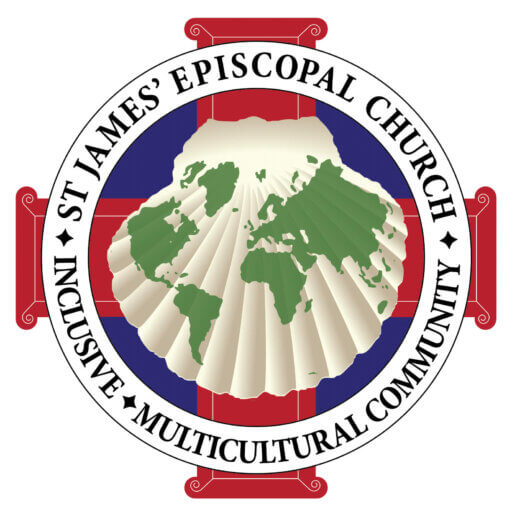
With Juneteenth approaching, we remember the emancipation of enslaved and oppressed African-Americans in Texas.
In church this Sunday, you will hear the stirring sounds of the hymn Lift Every Voice and Sing, which has a deep significance from its composition in 1899 to movements for equality today. Samantha Schmidt reflects on this in an excerpt from “Lift Every Voice and Sing”: the story behind the ‘black national anthem” that Beyoncé sang”, published in the Washington Post on April 16, 2018.
In 1899, a young poet and school principal named James Weldon Johnson was asked to address a crowd in Jacksonville, Fla., for the coming anniversary of Abraham Lincoln’s birthday. Just two decades had passed since the Reconstruction era, and lynchings were on the rise in the segregated South.
Instead of preparing an ordinary speech, Johnson decided to write a poem. He began with a simple but powerful line, a call to action: “Lift ev’ry voice and sing.”
He paced back and forth on his front porch, agonizing over the lines of the poem.
After finishing each stanza, he handed over the lyrics to his classically trained brother, John Rosamond Johnson, who put the words to music. As he wrote the words, evoking the struggle and resilience of his ancestors, he began to weep. “I could not keep back the tears, and made no effort to do so,” Johnson recounted. The following year, a chorus of 500 school children performed the song at the Lincoln celebration. The song quickly took off, becoming a rallying cry for black communities in the South, or as one observer noted at the time, “a collective prayer.”
Within 20 years, the National Association for the Advancement of Colored People adopted “Lift Ev’ry Voice and Sing,” as its official song. For generations to come, it would be known widely as the “black national anthem.”
In a performance in front of tens of thousands of people, one of America’s biggest pop stars paid homage to the song by singing a few of its lines. Beyoncé became the first black woman to headline the Coachella music festival in Indio, Calif. Her entire set — complete with a drum line, step dancing and musicians in berets — was an ode to black culture and historically black colleges.
But arguably the most significant moment in her show — politically and historically — was her rendition of “Lift Every Voice and Sing,” as it is also called, just before transitioning to “Formation.”
The inclusion of the turn-of-the-century hymn was notable not only because of size of the audience but also because of the setting — a mainstream festival that is known for being attended predominantly by white people.
“To have someone on the scale of Beyoncé in a space like Coachella, is really a departure,” Redmond, an associate professor of musicology and African American studies at the University of California at Los Angeles, said in an interview with The Washington Post.
Many black viewers reacting to the performance on Twitter agreed, calling her performance a “call to action.” Some said “Lift Every Voice and Sing” brought them to tears, bringing back memories of singing the hymn at church or elementary school as young children. Yet others on Twitter, along with Redmond, wondered how many in the audience could actually identify the song and its significance.
“It’s unclear to me to what extent the song resonated with those in the audience,” Redmond said. In her extensive study of the song’s history and role, she’s finding that fewer and fewer young people know the lyrics to the hymn.
But what is clear is Beyoncé’s reach. It was perhaps one of the most high-profile, public stages for the song in recent years, Redmond said.
Reaching a large audience was in fact one of the goals of the song’s original writers, Redmond said. The Johnson brothers intended to not only uplift black communities still healing from slavery but also to send a message to the white public, to illuminate the suffering African Americans had endured for generations.
“Lift Every Voice and Sing” is still sung as a hymn in many Protestant denominations. The strains of “Lift Every Voice” accompanied the civil rights movement of the 1960s and 1970s.
The Rev. Joseph Lowery, who co-founded the Southern Christian Leadership Conference with Martin Luther King Jr., recited part of the hymn while delivering the benediction at President Barack Obama’s first inauguration.
Redmond said she has noticed a revival of the song’s use in political protest in recent years, particularly with the rise of black protest movements on college campuses. After the 2012 Trayvon Martin shooting, protesters at Howard University joined around the flagpole at the center of campus, praying and singing “Lift Every Voice and Sing.”
A retired Howard professor, Eugene Williams, spent months last year urging NBA teams to play the song at games during Black History Month. In 2017, dozens of New York Police Department officers stood in solidarity with NFL player Colin Kaepernick, who gained national attention for refusing to stand during the national anthem. The officers wore black shirts with the logo “#ImWithKap” and sang “Lift Every Voice and Sing.”
But the song has also spurred controversy. In 2008, jazz singer Rene Marie was asked to perform the “Star Spangled Banner” at Denver’s State of the City address. While she stuck with the same melody, she sang the words to “Lift Every Voice and Sing,” merging the two songs. State and local politicians condemned her performance, painting it as unpatriotic.
The hymn has even created some divisions within the black community.
Timothy Askew, an associate professor of English at Clark Atlanta University, a historically black college, has said that although he loves the hymn, he feels it should not be labeled as a “black national anthem.”
“To sing the ‘black national anthem’ suggests that black people are separatist and want to have their own nation,” Askew told CNN. “This means that everything Martin Luther King Jr. believed about being one nation gets thrown out the window.”
Redmond argued that the anthem is an important way for Americans — particularly African Americans — to live out their citizenship.
“I think all citizenship is performed,” she said. “It’s not just something we’re born with, it’s something we’re born into. … That’s how people learn to represent themselves and see themselves in these United States.”
“There’s something already built into ‘Lift Every Voice and Sing’ that encourages people,” she said.





